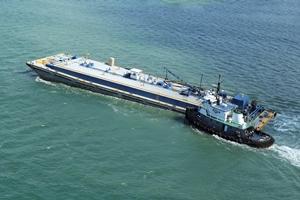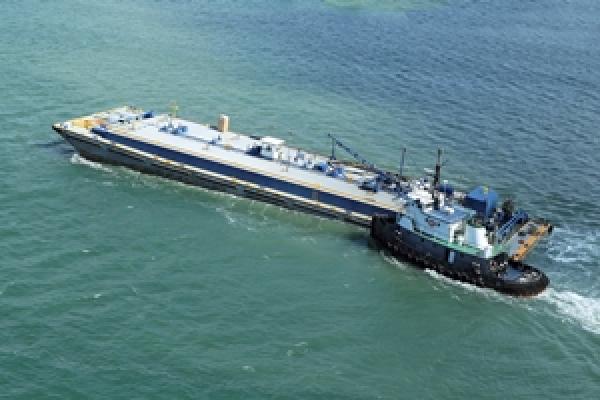
Heloise Campbell
Published: November 18, 2016

Under most time charterparties, the supply of bunkers is the responsibility of Charterers. Bunkers will usually become Charterers’ property upon delivery of the ship until they are purchased back by Owners upon redelivery.
With regard to the quantity of bunkers Charterers should supply to the vessel for redelivery, Owners are under a general duty to assist and to provide Charterers with all relevant information to enable Charterers to arrange this supply. Further, Charterers will not be permitted to order additional quantities which are not required for the performance of the chartered service for their own commercial purposes, for example to make a trading profit on redelivery where the market price is less than any stipulated contract price. Whilst these are general rules, there are a number of areas in which disputes can arise in relation to the quantity of bunkers to be on board on redelivery and the price to be paid for those bunkers, particularly at times where the bunker market is volatile or profit margins are narrow. The purpose of this article is to discuss some of these issues and relevant arbitration decisions which provide guidance on these.
What margin is applied by using the term “about” to describe the required quantity of bunkers on redelivery?
The term “about” is often used to qualify speed and performance warranties and in this context it has an accepted meaning1. However, it is also often used to describe the bunkers to be on board on delivery and redelivery and unfortunately when used in this manner its meaning is less certain.
It is obviously difficult to determine precisely when a vessel will be redelivered so it is logical that an allowance is made. However, the quantity of bunkers on board on redelivery may result in one party making a profit and therefore the key question is how much of an allowance is permitted.
In London Arbitration 13/03 the Tribunal considered the margin to be applied where a charterparty required Charterers to redeliver the vessel with “about” the same quantities of bunkers as on delivery. The vessel had been delivered with 1598.800mt of IFO and Charterers argued that taking into consideration a 5% margin for “about” they were allowed to redeliver the vessel with a minimum quantity of 1518.860 mt.
The Tribunal held that there was every reason for a margin to be allowed since it was not always possible to obtain precisely the same amount of bunkers to be on board on redelivery as on delivery. They concluded that Charterers were not in breach if they were within a 5% margin of the delivery quantity.
In the later decision in London Arbitration 15/13 https://www.steamshipmutual.com/publications/Articles/MoreCargoOnBoard1113.htm, the Tribunal considered a similar contractual obligation, Charterers also relied on a 5% margin. In contrast, Owners’ position was that the margin should only be 2% and that there was no standard rule (unlike in speed and performance claims).
Owners had advised 12 days before redelivery that the vessel would need at least 133mt of IFO. Despite this, Charterers stemmed only 95mt of IFO at the last discharge port prior to redelivery. Therefore, there was no genuine difficulty in ascertaining the quantity needed for redelivery bunkers in advance of redelivery as the Master had provided the necessary information.
The Tribunal concluded that any absolute rule where the term about was held to mean 5% would lead to an unacceptable situation where Charterers could try and save costs by redelivering with a 5% shortfall. In addition, the particular facts would need to be considered. For example, if, as in this case, the vessel could stem bunkers shortly before redelivery, a further tolerance for unexpected weather conditions may not be justifiable. The Tribunal held that a shortfall of no more than 2% was appropriate on these facts.=
It appears from these decisions that the margin to be applied will depend on the proximity of the last bunker stem to the place at which the vessel is to be redelivered. Whether an estimate has been made on honest and reasonable grounds or a Charterers’ decision is influenced by potential costs saving is likely to be a further consideration.
What Price is Payable for Bunkers Remaining on Board on Redelivery in Excess of the Quantities Required?
In London Arbitration 17/15 the Master had requested a supply of bunkers in excess of the quantity Charterers believed were required on redelivery - which was about the same as on delivery. The quantity of bunkers required was queried by Charterers but when the Master confirmed the quantity arrangements were made by Charterers to stem these bunkers at a price of US$408.50 per mt.
The vessel ended up with 272.427 mt more on redelivery than the charterparty required, even after allowance had been made for the term “about”.
Following redelivery, Charterers argued that the excess bunkers should be paid for at the charterparty price i.e. the fixed price stipulated in the charterparty for bunkers on delivery and redelivery, which was US$500 per MT. Owners argued that the market price in the redelivery area, US$328.50 per MT, should apply.
The Tribunal observed that whichever party was successful in their argument would make a windfall profit. To decide how to approach this matter, the Tribunal applied what they termed ‘business common sense’, and concluded that Charterers were entitled to receive the price that they had paid for the excess bunkers and no more (i.e. an additional US$21,794.16 (272.427 mt x (US$408.50 – US$328.50)) to that shown in the Owners’ final hire statement).
Whilst it was not relevant to this case, where a charterparty makes no provision for the bunker price to be paid on delivery or redelivery, the market price in the redelivery area will apply without regard to the price actually paid. However, certain charterparty forms either specify the price or provide a mechanism for establishing the price. By way of example, the Shelltime 4 form (line 290) provides that: “Such prices are to be supported by paid invoices.”
Delayed Delivery Resulting in Bunkers Less than the Required Redelivery Quantity – What Price is Paid by Charterers to Compensate Owners?
Another potential problem for Charterers is where they have stemmed bunkers for redelivery, and this amount is anticipated to fall within the margin of about the same quantity as on delivery, but then unexpected delays occur, for example due to port congestion, resulting in the vessel being delivered with a quantity of bunkers less than that required. In circumstances where the market price is significantly higher than the bunker price set out in the contract, this may lead to a debate as to what price is to be paid by Charterers to Owners for the shortfall.
If there is a contractual obligation to redeliver with ‘about’ the same quantities as on delivery, and Charterers deliver with a quantity which is less than this amount, they will be in breach of the charterparty. This will be the case even where the circumstances that have put Charterers in breach are beyond their control. The key question will then be what damages are payable as a result. The ordinary measure of damages would be that which would out Owners, in this case the innocent party, in the position they would have been in but for Charterers’ breach.
If Charterers redelivered the vessel with the correct quantity of bunkers, Owners would pay for those bunkers at the price set out in the charterparty. However, where the vessel is redelivered with a shortfall, Owners will have to purchase bunkers at the higher market price to make up that shortfall. On this basis, the market price for bunkers is likely to be the measure of loss for any bunkers less than “about the quantity on delivery”. Whilst it will depend on the facts, for example when and where redelivery bunkers were stemmed, and where Owners will next take bunkers on board, the price paid for the bunkers prior to redelivery may be a sensible measure of the market price and therefore market loss.
Comment
As highlighted in this article, there are a number of issues which can arise with bunker quantities on redelivery. The circumstances in which such issues arise are likely to be influenced by the bunker market at that time.
To avoid similar issues arising, Members may wish to consider including in charterparty contracts express provisions detailing the price to be paid for bunkers in excess or short of those required to achieve about the same quantity on redelivery as on delivery.
The outcome of any dispute on such issues will depend on the specific facts and wording of any relevant charterparty clauses. In this respect, it is important to ensure these terms of the charterparty reflect the intended agreement between the parties.
[] 0.5 knots and 5% are commonly agreed to be the meaning of “about” for speed and performance warranties respectively.


